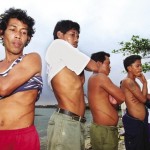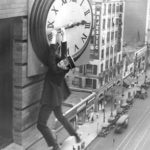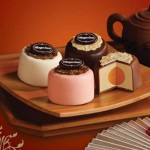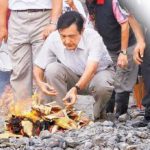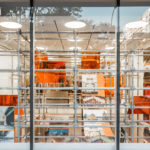Santa’s real workshop, the Chinese ‘Christmas village’
What is the real meaning of Christmas? Is it the gifts under the tree, the lights in the windows, the cards in the mail, dinners with family and friends, snow in the yard and shouts of “Merry Christmas” to those who pass us in the streets? Is this really ‘Christmas’?
In Christianity, Christmas is the celebration of the Nativity of Christ. Nowadays however due to the commercialization of Christmas, the feast seems to have lost its original sacred meaning. Even though Christmas is celebrated almost everywhere, nonetheless it has often lost its religious meaning. For instance in Japan, Christmas is very similar to St Valentine’s day, and young couples like to go for walks to look at the Christmas lights and have a romantic meal in a restaurant. Miller (The Poverty of Morality, 2001) argues that we have to allow culture to be the product of the localization of global forms, rather than only that which has deep historical and local tradition. But the danger is to forget the original meaning behind a sacred feast.
The pressure of consumer culture has affected religious traditions such as Christmas, and has caused an increment in the production of targeted items. For instance, The Guardian (see link below) reveals that over 60% of all the world’s Christmas decorations and accessories are produced in the Chinese city of Yiwu. In fact, the very heart of the real Santa’s workshop is three hundreds kilometers south of Shanghai – where there’s not a real pine tree nor natural snowflake in sight. In the ‘Christmas village’ of Yiwu, there is no snow and no elves, just 600 factories that produce more than half of all the decorations in the world.
The real Santa’s “elves” are Chinese migrant laborers work twelve hours a day for a maximum of £200/300 per month. In the article of The Guardian, the architect Oliver Wainwright states that the workers in Yiwu are not even entirely sure what Christmas really is and they just suppose it is something similar to their New Year celebrations. The complex pf Yiwu was declared by the UN as the “largest small commodity wholesale market in the world”. The scale of the operation necessitates a kind of urban plan, with five different districts. Christmas can be found in district 2. Inside the factories, there are corridors lined with plastic Christmas trees in blue and fluorescent pink, plastic pine cones in gold and silver and Father Christmas’ dolls playing the saxophone. “Santa Claus – says the Economist – is now better known to most Chinese people than Jesus”.
The Christmas village of Yiwu is an example of how commodification is diminishing the spiritual power of religions and impoverishing sacredness of religious feasts (Tambiah 1984) through the alienating process of mass-production.
The Guardian, Santa’s real workshop: the town in China that makes the world’s Christmas decorations. Article retrieved December 19, 2014 from: http://www.theguardian.com/artanddesign/architecture-design-blog/2014/dec/19/santas-real-workshop-the-town-in-china-that-makes-the-worlds-christmas-decorations?CMP=share_btn_fb
Contributed by GiuliaCavicchioli on 02/02/2015


